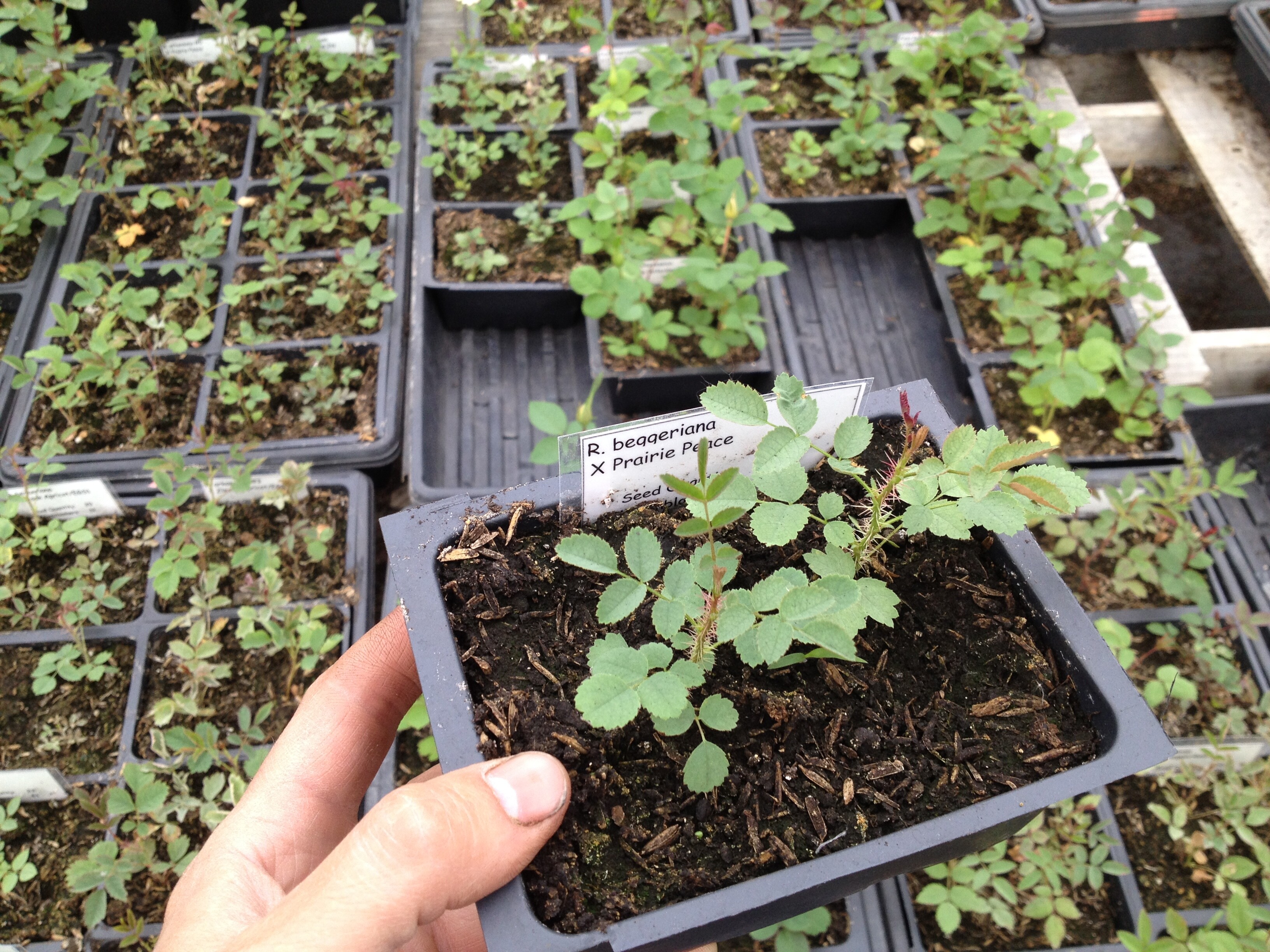OK, just babbling about my roses!
Let’s talk about Rugosa #3 and it’s seedlings. Last year I was positive it was self-sterile. Too many interesting and non-rugose seedlings. I think I had a selection bias when planting and chose the ones that were obviously not pure rugosa. Many of them bloomed the first year and appeared to be remontant, which goes against what people have said about rugosa seedlings. My theory is that they are triploids and so only have 1/3 rugosa genes. I have about six plants from OP seeds given to me by Paul Barden which have quite a different character. Many of them much more rugose, and none bloomed in their first two years. However, this year several are budded and I hope to see evidence of crossing with some of the roses in his garden. They are sturdy and healthy looking plants with good variation in foliage and habit.
Given my interesting results last year, this year I planted a ton of Rugosa #3 open-pollinated seeds. Disappointingly, they all look boringly similar and there are very, very few of the non-rugose seedlings that I saw last year. This could mean two things: it self-pollinated or there was an abundance of pollen nearby from a non-modern rose.
I am working the assumption that Rugosa #3 is or has reverted to a diploid.
Other random notes:
Cancan pollen was fertile and I have quite a few seedlings with that as a parent. It’s fun to have Radler genetics that are hardier than the KO’s and have more interesting blossom characteristics.
Yellow Brick Road: I have a ton of seedlings from various parents. Middling health and vigor…they need to be crossed with something mildew resistant.
Kim, I have a few Prairie Joy x Orantida seedlings that, while of course not blooming, exhibit extreme vigor.
I used a lot of Prairie Joy last year. Looking at the seedlings this year, I am still very happy with PJ as a parent. You have to make a lot of crosses with it, because it doesn’t have very many seeds per hip and a significant portion of the seedlings will be non-remontant. However, it can impart that lovely blue-green foliage and nice blossom form, together with some pretty good vigor and hopefully hardiness. I have a couple of PJ x Petit Pink seedlings that are miniature, vigorous, compact, heavily budded, and have that nice PJ foliage…I’m really glad I was able to make that cross. Out of about 40 PJ x Commander Gillette seedlings there are about three that appear to be remontant. One of them had a nice fragrance. I’m psyched to try to combine the lovely foliages of those two roses.
Last year I was speculating that PJ was best used as a seed parent to enhance chances of remontancy, but so far this year it seems like the percentages are similar whether used for seed or pollen. I have not examined this closely, however.
Some fun species/near species crosses that worked:
Rugosa #3 x R. virginiana
R. beggeriana x Prairie Peace: two seedlings that are clearly crosses due to the increased thorniness from PP
Love & Peace x Prairie Peace: ha ha! Just had to do it because of the names. One vigorous seedling.
R. beggeriana x R. foliolosa: this cross seemed to work in both directions.
R. foliolosa OP: Taken from a R. foliolosa growing in a pot in my breeding greenhouse, these appear to be crosses with modern roses and to me indicate self-sterility in R. foliolosa.
Alika x Hazeldean
Alika x Ross Rambler
Belle Poitevine x Hazeldean
Henry Hudson x David Z’s “Above and Beyond” - really nice vigor and health so far.
Tons and tons of R. carolina and R. virginiana X Various that are depressingly uniform and seem to indicate selfing. I can’t plant them all so I’m just sifting through to find some that seem to look slightly different. Or seem to have reduced thorns.
First Impression x R. virginiana from last year made it through the winter with flying colors (under the snow, of course) and I think I even see a bud! Great vigor. First Impression itself just barely survives here, so I’m psyched about these. Both FI and virginiana have nice glossy foliage. I’d like to do more Modern x R. virginiana crosses this year.

